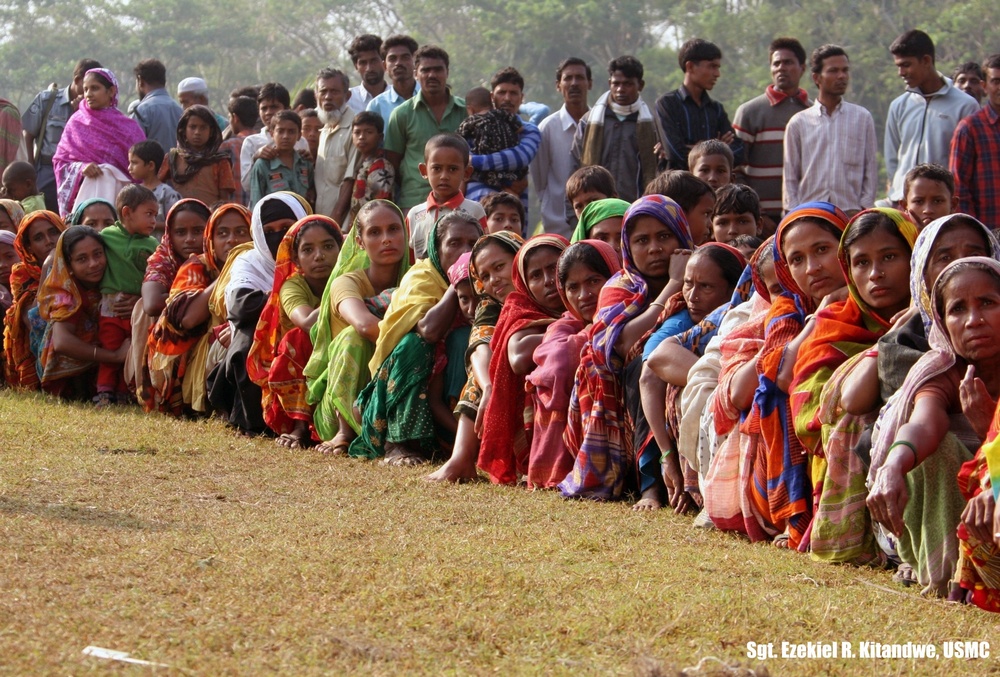
Is Fertility Preference Related to Perception of the Risk of Child Mortality, Changes in Landholding, and Type of Family? A Comparative Study on Populations Vulnerable and not Vulnerable to Extreme Weather Events in Bangladesh
This study addresses how perception of risk of child mortality, land ownership and household type influence fertility preferences. The study focuses on four distinct villages: two vulnerable to cyclones and floods and two not usually subject to the impacts of extreme weather events (EWEs). The study uses a mixed-methods approach in collecting relevant information from 759 randomly selected ever-married women at reproductive age who had at least one child and were living with their husband during the field survey.
The descriptive findings demonstrate that fertility preferences vary regarding perceived risk of child death, land ownership and household type, and that the influences of these factors vary for areas vulnerable to EWEs and not vulnerable to EWEs. Binary logistic regression analysis reveals that perceived risk of child death from EWEs and land ownership are the significant covariates in areas vulnerable to EWEs. In contrast, experience with child death, land ownership and household type are the most influential covariates explaining variation in fertility preferences in the areas not vulnerable to EWEs. The findings of the study can inform policy recommendations in terms of effective disaster management programs and family planning initiatives during climate-related events.
Population Review
Type: Article, pp. 61-99
Is Fertility Preference Related to Perception of the Risk of Child Mortality, Changes in Landholding, and Type of Family? A Comparative Study on Populations Vulnerable and not Vulnerable to Extreme Weather Events in Bangladesh
Authors: Shah Md. Atiqul Haq and Khandaker Jafor Ahmed
Affiliations: National Fund for Scientific Research and Centre for Demographic Research, Université catholique de Louvain, Louvain-la-Neuve, Belgium, and Department of Sociology, Shahjalal University of Science and Technology, Sylhet, Bangladesh (Haq); Department of Geography, Environment and Population, the University of Adelaide, South Australia (Ahmed)
Corresponding author/address: Shah Md. Atiqul Haq, National Fund for Scientific Research and Centre for Demographic Research, Université catholique de Louvain, Louvain-la-Neuve, Belgium; email: shah.atiqulhaq@uclouvain.be
Abstract
This study addresses how perception of risk of child mortality, land ownership and household type influence fertility preferences. The study focuses on four distinct villages: two vulnerable to cyclones and floods and two not usually subject to the impacts of extreme weather events (EWEs). The study uses a mixed-methods approach in collecting relevant information from 759 randomly selected ever-married women at reproductive age who had at least one child and were living with their husband during the field survey. The descriptive findings demonstrate that fertility preferences vary regarding perceived risk of child death, land ownership and household type, and that the influences of these factors vary for areas vulnerable to EWEs and not vulnerable to EWEs. Binary logistic regression analysis reveals that perceived risk of child death from EWEs and land ownership are the significant covariates in areas vulnerable to EWEs. In contrast, experience with child death, land ownership and household type are the most influential covariates explaining variation in fertility preferences in the areas not vulnerable to EWEs. The findings of the study can inform policy recommendations in terms of effective disaster management programs and family planning initiatives during climate-related events.
Keywords
Extreme weather events, fertility preferences, perception of risk of child death, changes in landholding, household type, vulnerable areas
© 2019 Sociological Demography Press
MLA
Haq, Shah Md. Atiqul and Khandaker Jafor Ahmed.
“Is Fertility Preference Related to Perception of the Risk of Child Mortality, Changes in Landholding, and Type of Family? A Comparative Study on Populations Vulnerable and not Vulnerable to Extreme Weather Events in Bangladesh.”
Population Review, vol. 58 no. 2, 2019.
Project MUSE, doi:10.1353/prv.2019.0007.
APA
Haq, S.M.A., & Ahmed, K.J. (2019).
Is Fertility Preference Related to Perception of the Risk of Child Mortality, Changes in Landholding, and Type of Family? A Comparative Study on Populations Vulnerable and not Vulnerable to Extreme Weather Events in Bangladesh.
Population Review 58(2), doi:10.1353/prv.2019.0007.
Chicago
Haq, Shah Md. Atiqul, and Khandaker Jafor Ahmed.
“Is Fertility Preference Related to Perception of the Risk of Child Mortality, Changes in Landholding, and Type of Family? A Comparative Study on Populations Vulnerable and not Vulnerable to Extreme Weather Events in Bangladesh.”
Population Review 58, no. 2 (2019) doi:10.1353/prv.2019.0007.
Endnote
TY – JOUR T1 –
Is Fertility Preference Related to Perception of the Risk of Child Mortality, Changes in Landholding, and Type of Family? A Comparative Study on Populations Vulnerable and not Vulnerable to Extreme Weather Events in Bangladesh
A1 – Haq, Shah Md. Atiqul A1 – Ahmed, Khandaker Jafor JF –
Population Review VL – 58 IS – 2 PY – 2019 PB – Sociological Demography Press SN – 1549-0955 UR – https://muse.jhu.edu/article/735388 N1
Vol. 58, Number 2, 2019 ER

